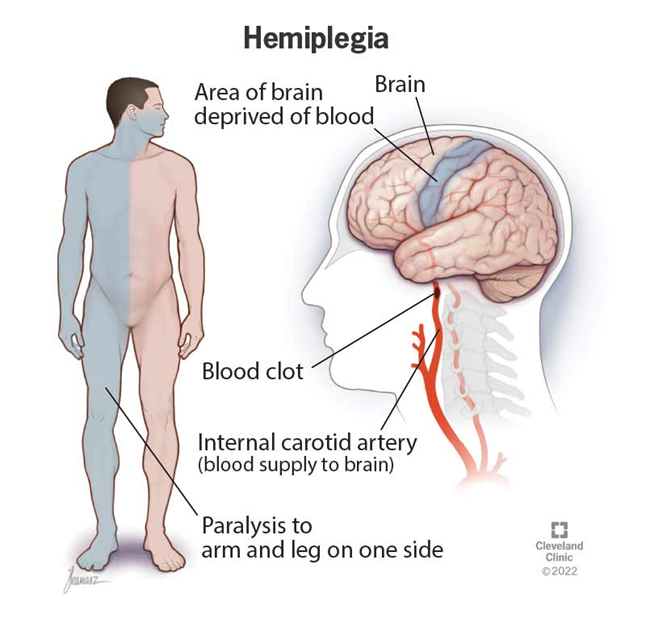A nurse is caring for a client who has right-sided hemiplegia following a recent stroke. Which of the following questions should the nurse ask to determine the client's ability to cope?
"Why do you think this has happened?"
"Are you okay with not being able to do some things you used to do?"
"Is anyone available to assist you with your hygiene?"
"How has this impacted your life?"
The Correct Answer is D
Choice A reason:
Asking "Why do you think this has happened?" may not be the most supportive approach. This question can lead to feelings of guilt or frustration, as the client might not have an answer and could feel blamed for their condition. It is more beneficial to focus on the client's current feelings and coping mechanisms.
Choice B reason:
Asking "Are you okay with not being able to do some things you used to do?" can be perceived as insensitive. It highlights the client's limitations rather than focusing on their strengths and coping strategies. This question might make the client feel more helpless and discouraged.
Choice C reason:
Asking "Is anyone available to assist you with your hygiene?" is important for assessing the client's support system and daily needs, but it does not directly address their emotional coping. While practical support is crucial, understanding the client's emotional and psychological state is equally important.
Choice D reason:
Asking "How has this impacted your life?" is an open-ended question that allows the client to express their feelings and experiences. It helps the nurse understand the client's perspective and coping mechanisms. This question encourages the client to share their emotional journey and can provide valuable insights into their mental and emotional well-being.

Nursing Test Bank
Naxlex Comprehensive Predictor Exams
Related Questions
Correct Answer is C
Explanation
Choice A reason:
Electroconvulsive therapy (ECT) is not typically used to reduce the frequency of seizures. In fact, ECT induces controlled seizures as part of its therapeutic process. Therefore, a reduction in seizure frequency is not an indicator of ECT's effectiveness.
Choice B reason:
While ECT can be used to treat various psychiatric conditions, it is most commonly and effectively used for severe depression. It is not primarily indicated for reducing the frequency of panic attacks. Therefore, a reduction in panic attacks is not a primary measure of ECT's effectiveness.
Choice C reason:
Improvement in manifestations of depression is a key indicator of ECT's effectiveness. ECT is often used when other treatments for major depressive disorder have failed. Patients typically show significant improvement in mood, energy levels, and overall functioning after a series of ECT treatments.
Choice D reason:
Decreased fear of heights, or acrophobia, is not a condition typically treated with ECT. Phobias are usually addressed through therapies such as cognitive-behavioral therapy (CBT) rather than ECT. Therefore, a decrease in the fear of heights is not an indicator of ECT's effectiveness.
Correct Answer is B
Explanation
Choice A reason:
Urinary retention is not commonly associated with citalopram. Citalopram, an SSRI (Selective Serotonin Reuptake Inhibitor), primarily affects serotonin levels in the brain and does not typically impact the urinary system to the extent of causing retention.
Choice B reason:
Decreased libido is a known adverse effect of citalopram. SSRIs, including citalopram, can affect sexual function, leading to decreased libido, difficulty achieving orgasm, or erectile dysfunction. This is due to the increased serotonin levels which can negatively impact the sexual response cycle.
Choice C reason:
While bruising is not a hallmark side effect of citalopram, it can occur, especially if there is an interaction with other medications that affect blood clotting. Citalopram can potentially increase the risk of bleeding, and easy bruising may be a sign of this. However, it is less common than other side effects like sexual dysfunction.
Choice D reason:
Jaundice is not a typical adverse effect of citalopram. Jaundice usually indicates a problem with the liver, and while liver function abnormalities have been reported with citalopram use, they are rare. Monitoring for jaundice is not part of the routine assessment for patients on citalopram unless there is a pre-existing liver condition or concurrent use of other hepatotoxic drugs.
Whether you are a student looking to ace your exams or a practicing nurse seeking to enhance your expertise , our nursing education contents will empower you with the confidence and competence to make a difference in the lives of patients and become a respected leader in the healthcare field.
Visit Naxlex, invest in your future and unlock endless possibilities with our unparalleled nursing education contents today
Report Wrong Answer on the Current Question
Do you disagree with the answer? If yes, what is your expected answer? Explain.
Kindly be descriptive with the issue you are facing.
